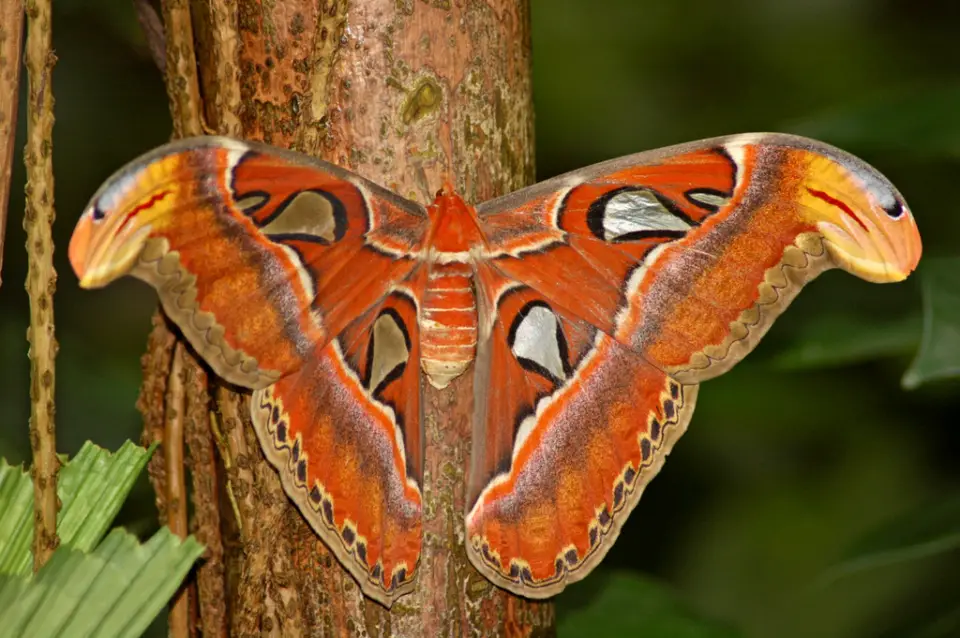Nature never ceases to amaze us with its ingenious survival strategies, and the atlas moth (Attacus atlas) is one such wonder. With wingspan reaching up to 12 inches, it is one of the largest moth species in the world. But what truly sets this majestic insect apart is its fascinating wing pattern, which mimics the heads of two cobras — a built-in defense mechanism designed to ward off predators. This adaptation not only reflects the moth’s beauty but also showcases nature’s ability to intertwine art and survival.
The Cobra Connection: A Natural Defense
The atlas moth’s wings are adorned with unique markings and shapes that remarkably resemble the heads of two cobra snakes. When at rest, the moth positions its wings in such a way that these markings give the illusion of two cobras standing guard. This feature is not just for show; it serves a vital purpose — to deter predators like birds or small mammals. The intimidating look of the “cobra heads” makes potential attackers think twice before approaching, ensuring the moth has time to escape unscathed.

Life Cycle of an Atlas Moth
Despite its size and stunning beauty, the atlas moth lives a short life. The adult moths have a very limited lifespan of about one to two weeks. They emerge from their cocoons without the ability to eat, surviving solely on the energy stored from their larval stage. Interestingly, the entire life cycle of an atlas moth — from egg to caterpillar, cocoon, and adult — can span several months, but its time in flight is brief yet breathtaking.
During their caterpillar phase, they feed voraciously on the leaves of trees like guava and citrus. Once they’ve stored enough energy, they spin silk cocoons, which are sometimes harvested by local communities for use in textiles. These moths may be short-lived, but their journey from egg to adult is nothing short of spectacular.

A Symbol of Transformation and Beauty
The atlas moth is not just admired for its defensive tricks; it has also become a symbol of transformation. In many cultures, moths and butterflies represent change, endurance, and the beauty that can emerge after a period of growth. The atlas moth, with its grandeur and mysterious markings, embodies this symbolism perfectly.
In addition to being a master of disguise, the atlas moth also plays a crucial role in the ecosystem. As caterpillars, they help control plant growth by feeding on leaves, and as adults, they contribute to pollination, even though their time is fleeting.
Final Thoughts
The atlas moth may live a brief life, but it leaves a lasting impression. Its striking resemblance to cobras is just one of the ways this incredible creature has adapted to survive. Beyond its biological purpose, the atlas moth serves as a reminder of the wonders of nature — its beauty, ingenuity, and the continuous cycle of life.
If you ever encounter one of these winged giants, take a moment to appreciate the delicate artistry nature has woven into its wings. The atlas moth is more than just a moth; it’s a masterpiece.

